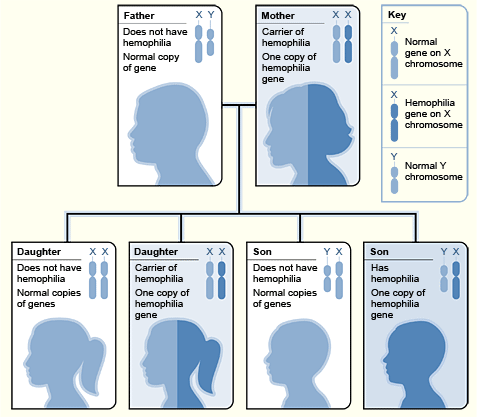Enhance your health with free online physiotherapy exercise lessons and videos about various disease and health condition
Hemophilia Physical Therapy
Hemophilia Physical therapy for the child with bleeding disorder is aimed at maintaining ROM and strength in all joints and at preventing or diminishing disability.
HEMOPHILIA
Hemophilia is a bleeding disorder inherited as a sex-linked autosomal recessive trait (males are affected, females are carriers). The condition is caused by an abnormality of plasma clotting proteins (clotting factor VIII in hemophilia A; clotting factor IX in hemophilia B or Christmas disease) necessary for blood coagulation, producing a prolonged but not faster bleeding than would occur in a normal person with the same injury.

Two primary types:
- Hemophilia A (classic hemophilia-factor VIII deficiency): 80% of all cases.
- Hemophilia B. (Christmas disease-factor IX deficiency).
The classification of the severity of hemophilia has been based on either clinical bleeding symptoms or on plasma pro-coagulant levels, which are the most Widely used criteria.
Clinical Features of Hemophilia
The hallmark of hemophilia is hemorrhage into the joints. This bleeding is painful and leads to long-term inflammation and deterioration of the joint, resulting in permanent deformities, misalignment, loss of mobility, and extremities of unequal lengths.
Various FVIII and FIX concentrates are now available to treat HA and HB.
Complications with Hemophilia
Complications include:
- Joint contracture(s) and deformities (especially at the hip, knee, elbow, and ankle joint").
- Hemophiliac arthropathy, which may occur in severe forms: the articular cartilage softens, turns brown (due to hemosiderin), and becomes pitted and fragmented.
- Muscle weakness and atrophy around affected joints.
- Peripheral nerve compression by hematoma.
- Postural scoliosis.
- Decreased aerobic fitness.
- Difficulties with ADLs.
Hemophilia Physical Therapy
Physical Therapy Role:
Contraindication/Precaution for Hemophilia Physical Therapy: Thermotherapy- Heat causes dilitation of blood vessels and increases blood flow.
Physical therapy for the child with hemophilia is aimed at maintaining ROM and strength in all joints and at preventing or diminishing disability. Specific goals include:
PRICE protocol in case of acute Bleeding:
- PRICE (Protection, Rest, Ice, Compression, Elevation)- PRICE is a treatment many health care professionals recommend for joint bleeds. It also reduces swelling and tissue damage when used together with clotting factor concentrates.
Prevention of contractures:
- Manual traction and mobilization.
- Progressive/dynamic splinting.
- Serial casting/drop-out casts.
- Active ROM exercises (passive ROM is generally contraindicated).
Maintaining strength:
- Isometric strengthening exercises initially, then graded progressive exercises.
- Exercise in a pool, hot soaks in a tub, or whirlpool baths. It is easier to move the body in water. Good for aerobic conditioning.
Preventing or diminishing disability:
- Gait training.
- Proprioceptive training.
- Bracing/splints-provides stabilization and protection.
References
- Elsevier: Haemophilia: exercise and sport
- Williams V, Griffiths A, Tapp H, et al. A hemophilic son of a hemophiliac: did my son inherit my hemophilia? J Thromb Haemost. 2007;5:210-211.
- Lusher .IM, Brownstein AP. Hemophilia and HIV. J Thrornb Haernost.2007;12:12.
- Hoots WK, Nugent DJ. Evidence for the benefits of prophylaxis in the management of hemophilia A. Thromb Haemost. 2006;96: 433-440.
- Evatt BL. The tragic history of AIDS in the hemophilia population, 1982-1984.J Thromb Haemost. 2006;4:2295-2301. Epub Sept. 14, 2006.
- Hilliard P, Funk 5, Zourikian N, et al. Hemophilia joint health score reliability study. Haemophilia. 2006;12:518-525.
Recent Articles
|
Author's Pick
Rating: 4.4 Votes: 252 |

